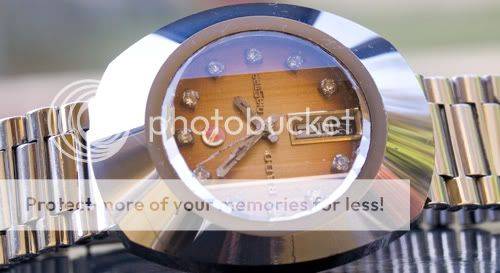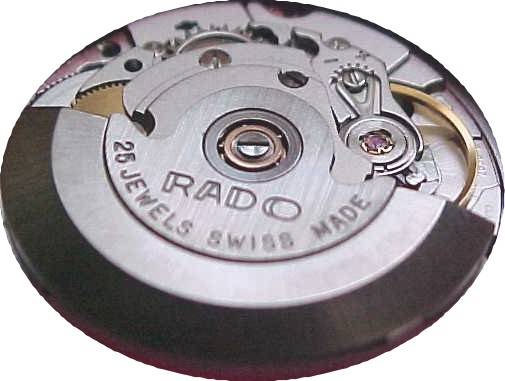
| Main centres: | 1-3 business days |
| Regional areas: | 3-4 business days |
| Remote areas: | 3-5 business days |

Below are pictures of a most unusual watch. Rado watches are unique in their styling and the materials used to make the cases. The top part is made of tungsten carbide, an extremely hard material that is used in industry to make gravers and other cutting tools. The crystal is thick saphire, also extremely hard. The watch is therefore virtually scratchproof. This model is from the 1960's. The watch has a high quality Swiss Ebauche (ETA) mechanism with 25 jewels. It has a micro-regulator above the balance wheel, making it possible to achieve excellent accuracy. It also has ball bearings in the automatic rotor, making it more durable. After regulation, it now keeps time with an error of only one or two seconds per day! I was never able to achieve this kind of accuracy with my Rolex. I recommend the mechanical watches by Rado very highly.

The Rado DiaStar Original made its debut in 1962 as the world's first "scratch-proof" watch. Since then, Rado has distinctively differentiated itself from the rest of the watch industry by using unique and unusual high technology materials for equally unique and "scratch-proof" dress watch designs. The Rado Original DiaStar and its sister collection, the Original, continue the general case, dial and crystal design of the 1962 DiaStar Original, making it their classic.
The crystal is of thick, multi-faceted man-made sapphire (aka corundum), harder and more "scratch-proof" than the case shell. The faceting is subtle; normally when looking at the watch one sees vertical bands on the dial that at a glance appear to be part of the dial finish itself. In reality, it's the subtle facets and how they cast light on the dial, which has a subtle, very fine metallic flake finish. While the location of the logos, day/date and and trademark rotating anchor have changed, the general dial and hands style hasn't changed in at least 30 years.